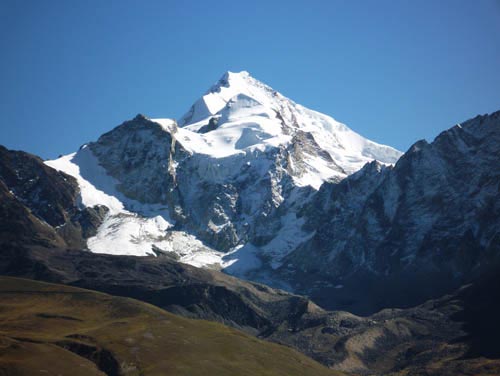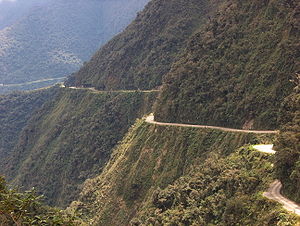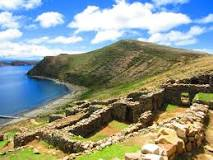On the occasion of the 192nd Independence Day of Bolivia which falls on Aug.
4th, 2017, Bolivia Charge d'Affaires a.i. Mr. Luis Pablo Ossio contributed this tourism
article to the NDNnews (www.ndnnews.co.kr) & Seoulcity magazine as follows. -Ed.
 |
| Bolivia Charge d'Affaires a.i. Mr. Luis Pablo Ossio, Embassy of Bolivia (Courtesy: Embassy of Bolivia) |
By Juan Pedro Calderón Zabala
First Secretary, Embassy of the Plurinational State of Bolivia to the Republic of Korea
It is a great pleasure to introduce to you the Plurinational State of Bolivia, a country
that I am honored to represent as First Secretary in the Republic of Korea.
Bolivia is a touristic destination, located in the heart of South America. A country with
36 indigenous cultures and languages, besides Spanish. A rich country in biodiversity,
with unique landscapes and ancient history. Bolivia is a country where magic and
reality become one. In this regard, I will try to summarize four of the most popular
destinations.
 |
| Huayna Potosi (Courtesy: Embassy of Bolivia) |
LA PAZ.-
City of La Paz
As the Government Site, it is the most important city of the country. It is featured by
its high buildings in a particular landscape, since it’s located in a big hole. It is located at 3250 m.a.s.l., being the highest Capital in the
world.
Since it is inside a hole, the weather is benign and dry. It hardly goes above 25
degrees or below 0 degrees. The city is full of attractions and it has almost everything
to satisfy tourism. It is considered as a modern city and it has also beautiful residential
neighborhoods.
Nearby, you can also find some attractions such as Copacabana, a sanctuary in honor
to the Virgin Mary, located in the Shore of Titicaca Lake; also, Tiahuanaco, (magnificent
millenarian aymara ruins) Chacaltaya (the highest ski slope in the world) and the
valley of Yungas, a subtropical paradise plenty of swimming pools and night life.
 |
| Valley of Yungas (Courtesy: Embassy of Bolivia) |
Valley of Yungas
POTOSÍ AND SUCRE.-
City of Potosi City of Sucre
The Imperial city of Potosi, located in the south of Bolivia. In the XVI century, it was
considered the largest city in the world, due to its mining resources. It used to have
a population of more than one hundred sixty thousand inhabitants.
Nowadays, Potosi remains as a very important mining center. It has many colonial
churches and museums, such as ¨La Casa de la Moneda¨ (National Mint of Bolivia) where silver coins were mitted with the silver extracted
from Cerro Rico (Rich Mountain) and the Convent of Santa Teresa and many baroque
style constructions.
Sucre, on the other hand, located from Potosi a little bit inside wards, is the official
capital of Bolivia, although the Government Site is La Paz. In this colonial renaissance
white colored city, you can visit “la Casa de la Libertad” (the Freedom House) where
the independence of Bolivia was signed. The main attractions are the Main Square
and the Central Park.
 |
| Isla Del Sol (Courtesy: Embassy of Bolivia) |
UYUNI SALT DESERT.
Uyuni Salt Desert
Nowadays it is the most famous attraction of Bolivia. It consists of a huge salt desert,
the biggest in the world, and it also contains the biggest amounts of lithium in the
world, which is going to be exploited by a Korean company. During the rainy season,
it reflects the sky just like a mirror, causing the impression of walking on the sky.
Nearby, you can also find the red and green lagoons, other wonders of Bolivian
geography.
SANTA CRUZ DE LA SIERRA.
City of Santa Cruz
This city is one of the biggest cities in Bolivia, due to its economic influence and
represents a big opportunity for future investments. One of its main attractions is
the Piraí River and Equipetrol, which is a car boulevard, it has also the most active
night life in Bolivia and it is also said to have the most beautiful women.
Nearby are the Fort of Samaipata, an Inca archeological site, and the Jesuitic Missions
of Chiquitos, ancient missions founded by Spanish priests in the colonial era, which
keep their particular colonial architecture; both, Cultural Patrimony of Humanity.
Jesuitic Missions of Chiquitos
This is a summary of my beautiful country. As you can see, my homeland contains a
lot of ethnical and cultural diversity as well as many other things that await to be
seen by you. Thank you very much for your attention.

